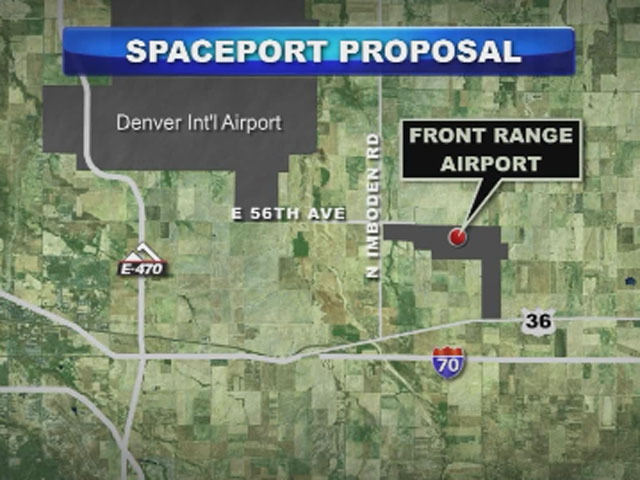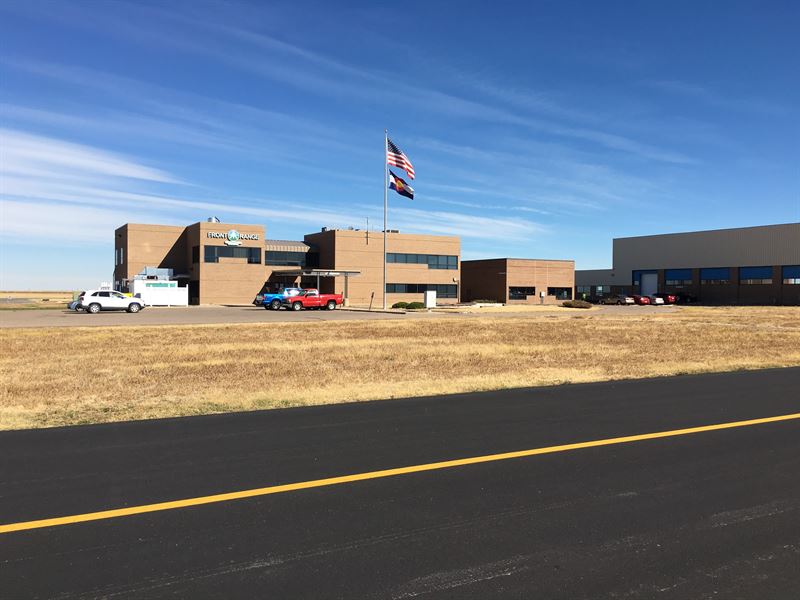Nine circles of bureaucracy: how the airport in Denver is trying to get a license to the spaceport

Private astronautics is actively gaining momentum. Companies like SpaceX and Virgin Galactic appear on the market, launching their rockets and satellites into space and intend to provide transportation services.
The space business seems to be profitable and promising, so new players are trying to enter the market, but this can be very difficult to do. In this respect, the story of the Front Range Denver Airport, which since 2011 has been trying to obtain a license for the Spaceport Colorado, has been illustrative.
')
Long game

Center Spaceport Colorado plan to build a mile from the current territory of the airport Front Range. The concept of the cosmodrome was first introduced seven years ago. In 2011, Colorado Governor John Hickenlooper appealed to the US Federal Aviation Administration (FAA) with a request to secure the status of the launch site for the Front Range airport.
Since then, the Spaceport Colorado team has begun an active dialogue with the FAA to obtain a cosmodrome license.
The first step in the licensing process was the feasibility study of the future cosmodrome. For its preparation in 2012 Spaceport Colorado was allocated a grant of $ 200 thousand. The administration was supposed to investigate the logistics of operating a commercial space center. In particular, the requirements for vehicles, the conditions for their launch and landing.
In 2013, organizations such as the Colorado Department of Aeronautics Transportation, DIA and Aurora invested in Spaceport Colorado.
In the same year, he signed a contract with HDR engineering company, which was supposed to transform the airport into a space center. Create a business plan, conduct a technical analysis of the object and assess the state of the environment - have become the main tasks for HDR.
However, until now there was no clear plan of action, there was confusion in the organization of the working process and the formation of a concept. Therefore, the administration of Front Range decided to terminate the contract with Dennis Hap, who for many years was the executive director of the airport. In early 2014, retired naval pilot Dave Ruppel took his place.
Then for a while Spaceport Colorado disappeared from the news feeds. Only in mid-autumn 2015, Dave Ruppel announced that the administration intends to file an application for licensing the space center by the end of October, in order to get approval in the second quarter of 2016.
One of the key problems that a potential space center faced was its proximity to Denver International Airport (DIA). The Front Range is just a few minutes away and right in Class B airspace. Therefore, the integration of the spaceport and future spacecraft into the national airspace system creates a difficult situation.

And only in the beginning of March 2018, the FAA began to consider the application for obtaining the appropriate license. The FAA takes half a year to make a decision. If the answer is positive, Front Range will receive permission to put satellites into orbit and develop space tourism.
Before issuing a license, the FAA must ensure that the airspace between Front Range and DIA is safe and secure. In the past few months, the agency has already conducted an environmental assessment of how future spaceport flights from Spaceport Colorado will affect noise, air quality, lighting, historical and archaeological resources.
Today, the FAA has licensed ten private space centers . The sites are located in Alaska, New Mexico, Texas, Oklahoma, Florida. Recently licensed Ellington Airport Houston. Sites are used only for suborbital launches.
“We expect to be number 11,” says Dave Ruppel, director of Front Range airport.
Available suborbital flights
If Spaceport Colorado receives a license, then the spaceport will accommodate ships making horizontal takeoffs and landings using a reusable rocket propulsion system. In other words, air assets will take off and land like ordinary aircraft.
Suborbital flight will take place on an elliptical trajectory. Flights will be operated to anywhere in the world once a week. At the same time travel time is significantly reduced. For example, a 13-hour trip from Denver to Tokyo will “fit” in a 90-minute flight.
Withstand such flights will be able to all who calmly endure the ride on a roller coaster.
“We watched the launch of spaceports across the country. Now it's Colorado time. This is where the future of space travel can arise, ” said Jams Sedletski , director of public affairs for the district of Adams.
It is too early to say which spacecraft will be represented in the Front Range. Since even if the license is granted in August 2018, this does not mean that the shuttles will start flying right away. It will take another five to eight years to find anchor tenants. At the cosmodrome should go companies that create private manned suborbital spacecraft - Virgin Galactic, Airbus and XCOR.
About all the news of the project Spaceport Colorado management reports on the official website .
Why put so much effort

In addition to transportation services, Spaceport Colorado will create opportunities for the development of the aerospace industry in the state. Colorado already boasts a strong research community and major aerospace companies.
The state has such air corporations as Lockheed Martin, a military-industrial enterprise, the manufacturer of the spacecraft Ball Aerospace and the United Launch Alliance, which displays the spacecraft on the order of the US government. A number of companies are developing suborbital spacecraft, including the famous Dream Chaser .
In addition, Colorado ranks second in the United States by the number of people involved in the aerospace industry (more than 25 thousand).
The construction of Spaceport Colorado will be the next logical step in the development of state space infrastructure. The spaceport will also bring tangible economic benefits: an increase in the number of jobs and an increase in tax revenues in the area.
“Our goal is to attract high-tech enterprises focused on the space industry. It is very important for us that major players for the production of small satellites come to the cosmodrome, ”Ruppel emphasizes .
If in the 20th century states participated in the space race, now private companies are involved in it. They invent new rockets and promise accessible space to humanity. In 2016, the turnover of the space industry was estimated at $ 329 billion, and three-quarters of this activity accounted for private companies, not the state.
It will be possible to learn firsthand at the InSpace Forum on March 21 about how the infrastructure of private space exploration is being formed in Russia.
Source: https://habr.com/ru/post/411153/
All Articles